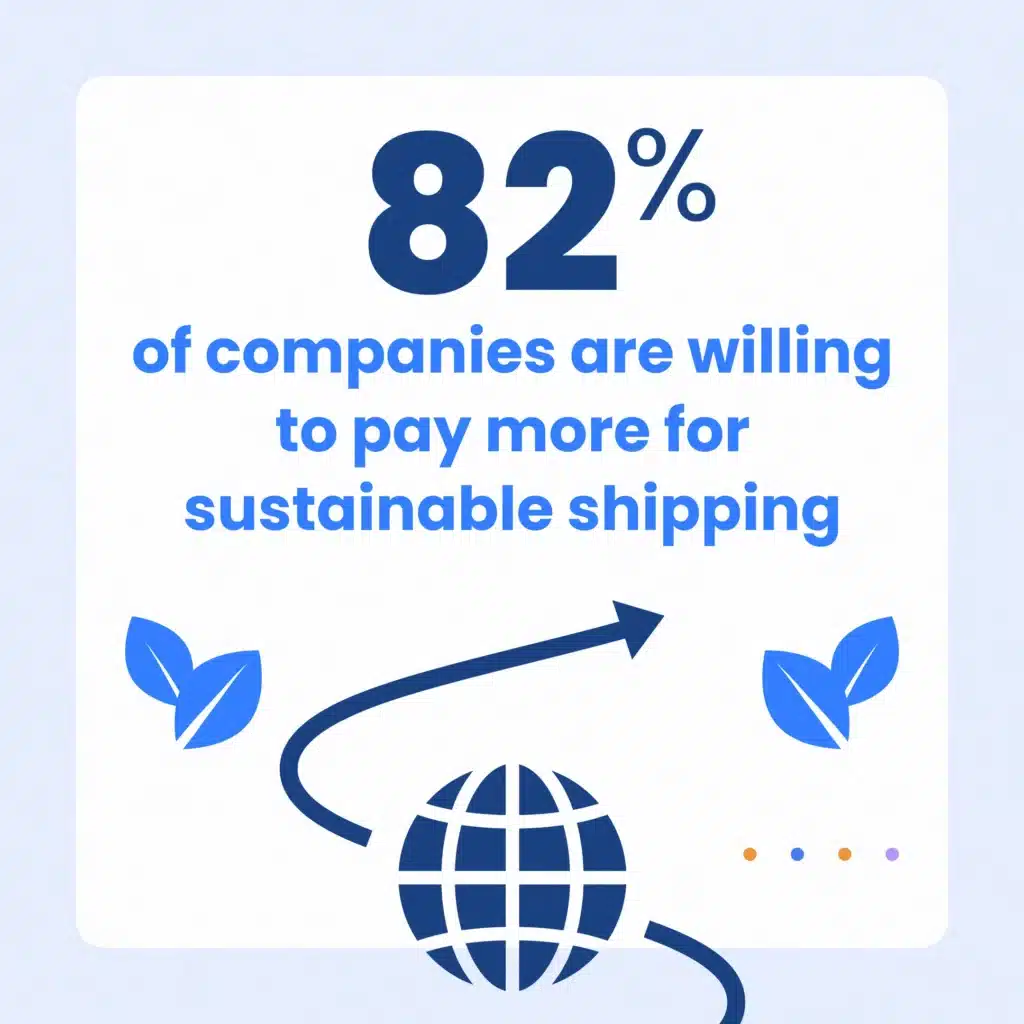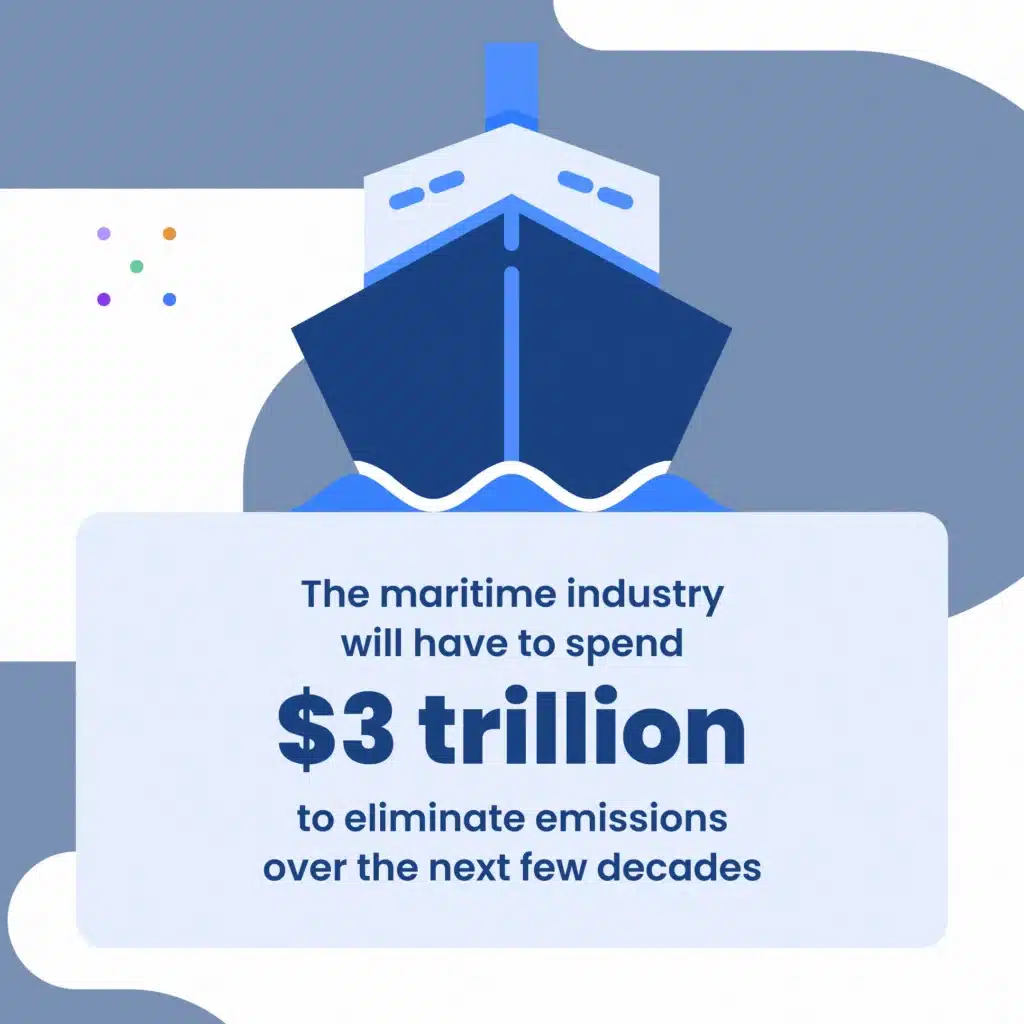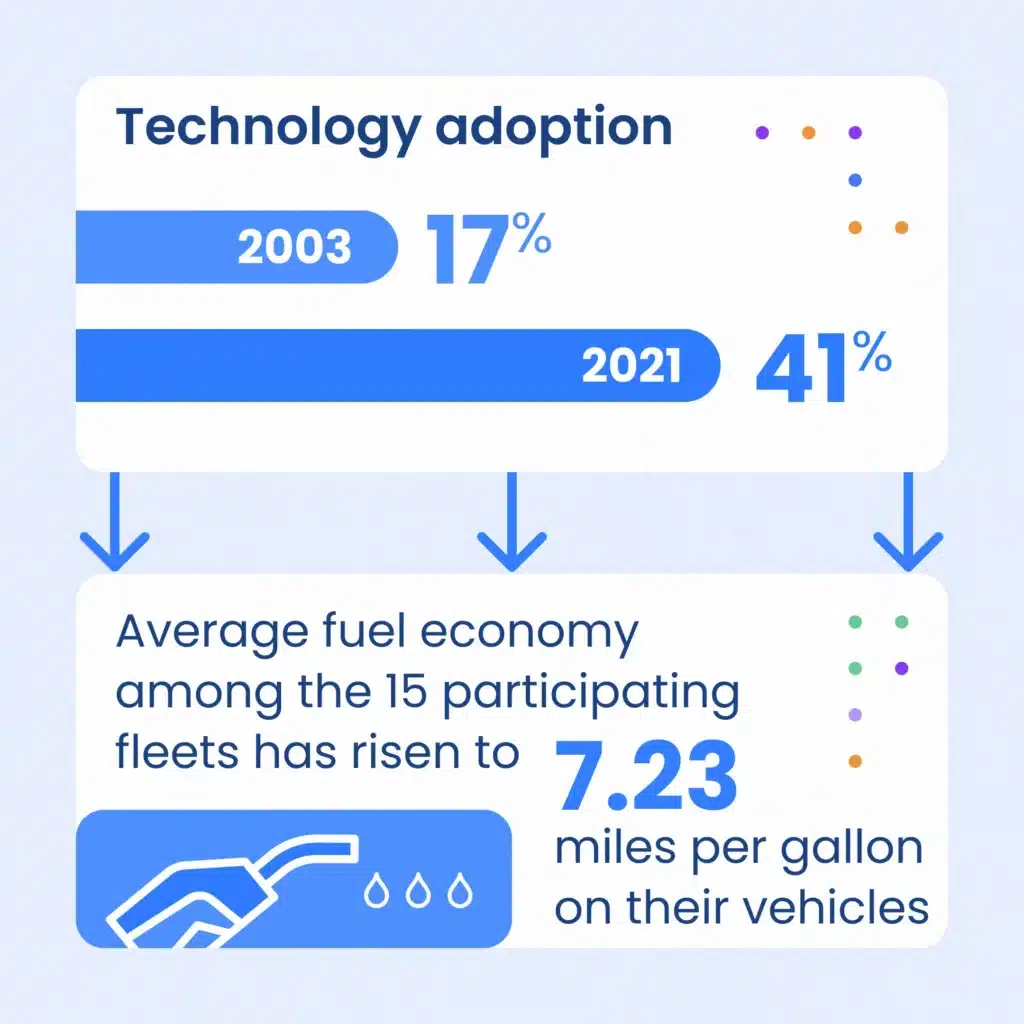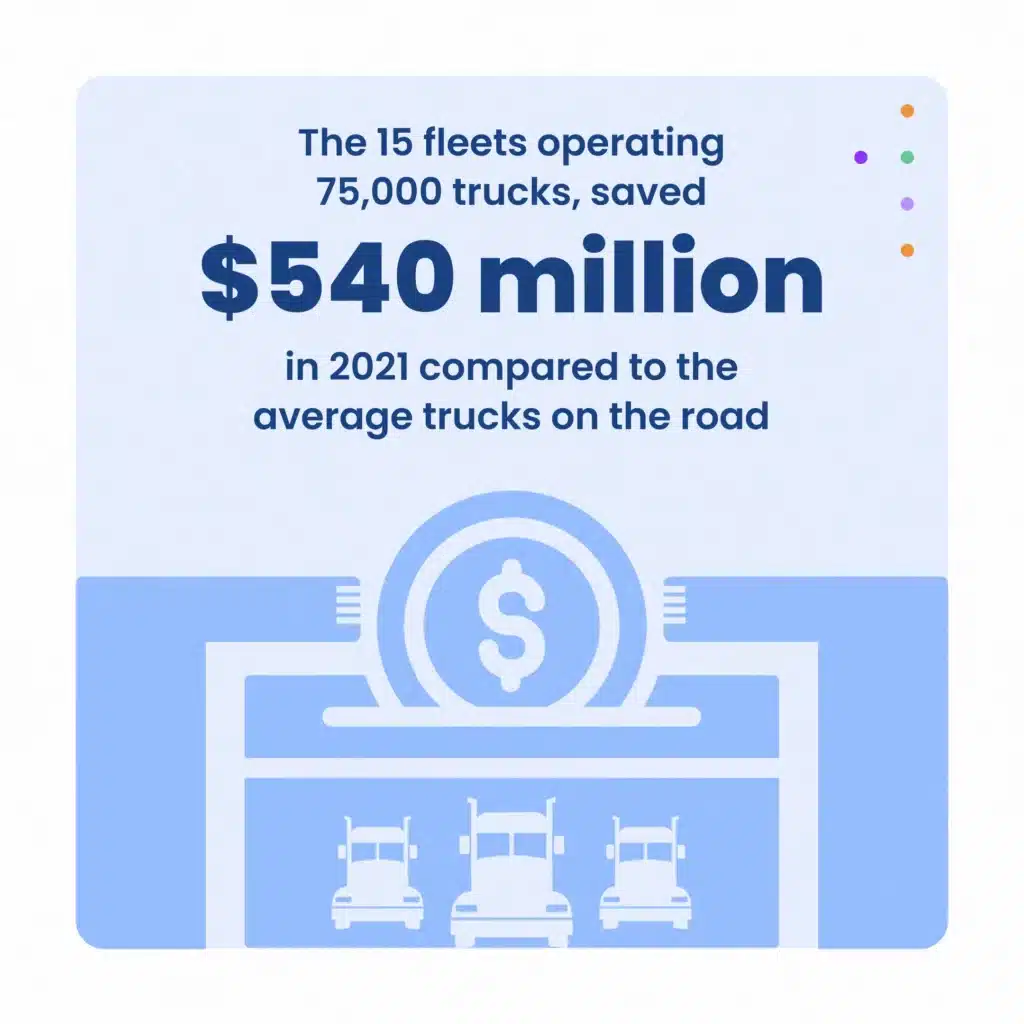The effects of climate change has never been so evident as they are in 2023. Whether it’s the heat waves experienced across India and China, falling water levels in the Mississippi River, or hotter summers in Europe, every part of the world is going through a climate crisis. This is why most companies’ goals and mission statements today are centered on sustainability. Supply chain and logistics operations are big contributors to climate change. If you are working with a fleet business or a logistics company in 2023, your institution bears a significant responsibility to improve the situation through decarbonization and improved sustainability.
But ‘going green’ is easier said than done. In fact, according to a recent study by BCG, 82% of companies are willing to pay more for sustainable shipping. But the premium they are willing to pay falls far short of the investment needed to significantly reduce emissions. This is a very real problem faced by logistics businesses as well. Going green can put a strain on budgets. There is also inflationary pressure that businesses and individuals have to deal with in 2023. So how can truck fleets and supply chains be sustainable and also maintain profits? In this article, we look at some sustainability strategies to help fleet managers and fleet owners go green in 2023.
What Green Logistics Goals Do Truck Fleets and Supply Chains Tend to Focus on?

There are various ways truck fleets have chosen to go green. Some of the goals of sustainable or green logistics include:
- Reduction in carbon emissions
- Reduction in dependence on fuels like petrol and diesel
- Increase of bio-fuels and alternate fuels, as well as electric vehicles in fleets
- Improving and using sustainable supply chains
- Reducing waste and pollution
- Improved use of resources available
How can You Optimize Your Truck Fleets for Sustainability in 2023?

Reduction of Vehicle Miles Traveled, or VMT
Broad fuel, infrastructure, and transportation equipment changes to reduce carbon emissions are costly. According to shipping services provider Clarksons, the maritime industry alone will have to spend $3 trillion to eliminate emissions over the next few decades, especially to ensure they fall in line with regulations and laws.
With the European Union planning to impose carbon-emission taxes on ships calling at its ports and the Biden administration proposing tougher new standards for heavy-duty truck emissions last year, logistics companies must find new ways to reduce emissions and incorporate green logistics. One option logistics and supply chain service providers can choose electric vehicles. In fact, the state of California plans to phase out the use of diesel-powered trucks at its ports, with the goal of having only hydrogen- and battery-electric trucks calling at its docks by 2035.
But EVs can be expensive, especially for small and mid-sized truck fleets. If you are wondering how you can go green while also maintaining your toplines and bottom lines, a simple method you have access to is reducing your dependency on fuels like gasoline and diesel. This can be achieved by evaluating ways to reduce the miles your fleets traverse.
Reduced fleet VMT lowers fleet petroleum consumption and fleet costs, including lower vehicle operation and maintenance costs and longer vehicle life before replacement. Furthermore, reducing VMT can reduce the number (and cost) of vehicles required to complete the fleet’s mission and is thus directly related to fleet right-sizing actions. Fleet managers can always strive to reduce VMT while increasing fleet efficiency and using alternative fuels (including electricity).
Some simple ways fleet managers and fleet owners like you can reduce VMT to go green include:
- Improved scheduling for fleets
- Route optimization to improve fleet efficiency
- Reducing idling and downtime via real-time monitoring of your assets
Leveraging regular preventive fleet maintenance to ensure that your assets are working well
Prioritizing Fuel Economy and Fuel Efficiency in Your Truck Fleets
Increasing fleet fuel efficiency is a simple, low-cost, and effective way to meet statutory requirements and reduce fleet petroleum consumption. Simply put, ensuring that your fleet utilizes fuel optimally and reduces waste or idling directly leads to cost savings and also helps you go green.
Fleet managers and fleet owners can select fuel-efficient vehicles when replacing old assets or buying new ones. Fleet managers can also improve fuel economy by properly maintaining fleet vehicles. To effectively ensure that your fleet is fuel efficient, there are a few aspects you can pay attention to as fleet managers or fleet owners:
- You can leverage preventive fleet maintenance to ensure proper tuning of your vehicles’ engines
- You can ensure proper tire inflation to the recommended tire pressure on all assets, encouraging drivers to check tire pressure as a best practice
- Drivers and maintenance staff can also be guided to check and replace air filters on a regular basis for your fleet
- In fact, to improve fuel economy, fleet managers can ensure the usage of the recommended grade of motor oil for your vehicle.
Leverage Digital Tools to Ensure Fleet Optimization, Go Green
A top-line finding from the 2022 NACFE study found that average fuel economy among the 15 participating truck fleets has risen to 7.23 miles per gallon on their vehicles as technology adoption has grown from 17% going back to 2003 to more than double—41%—in 2021. Using tech and telematics to drive fuel savings and reduce vehicle miles traveled is a powerful way to go green, as well as ensure top lines and bottom lines stay stable.

In fact, the 15 fleets participating in the above study, operating 75,000 trucks, saved $540 million in 2021 compared to the average trucks on the road!
Technology adoption and digitization can translate to using transportation management systems and ensuring that all your systems are connected and able to provide business intelligence. For instance, Fleetpal’s fleet maintenance and management software not only automates your fleet maintenance needs but also studies your fleet maintenance data to provide workable preventive maintenance schedules. With such technological tools, you can pay rigorous attention to all your assets and avoid wastage. Fleet maintenance capabilities you can fine-tune with such tools include:
- Streamlined and automated work order management
- Maintaining vendor directories for easy collaboration
- Monitoring every aspect of your truck fleets and fleet equipment
- Automated reporting for maintenance, accidents, repairs, and more
- Seamless tracking and management of parts
- Custom data integrations to help you make sense of your fleet data

According to a study, the demand for global green logistics market size & share was valued at approximately $1,038.5 billion in 2021. The market is expected to grow above a CAGR of 6.10% and is anticipated to reach over USD 1481.5 billion by 2028. Green logistics is not just a trend that logistics and supply chain businesses are expected to embrace. Fleets need to go green to ensure a greener and cleaner future.
Fleet managers and owners like you are probably already working on green initiatives to ensure sustainability. But if you are looking for a simple way to start and wish to improve fuel economy, tools like Fleetpal that help you with fleet preventive maintenance can help you along. You can then determine what needs to be done to go green and increase your profits. Contact us today to learn how our Fleetpal maintenance management software helps fleet managers, maintenance managers, and suppliers collaborate.
